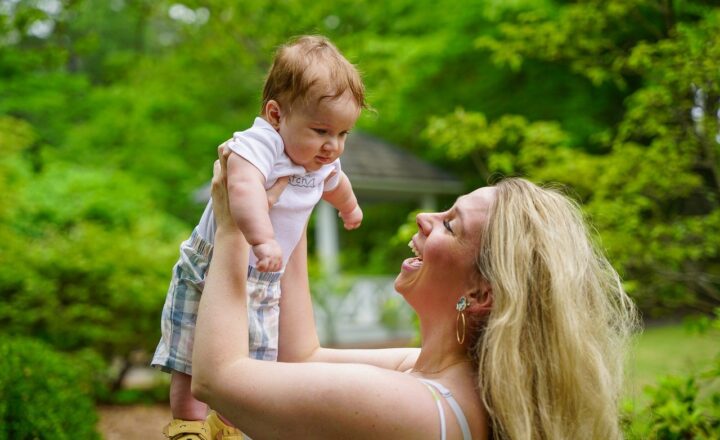How to Teach Kids to Handle Failure Gracefully
November 16, 2024

Failure is an inevitable part of life, and how we respond to it can shape our character and resilience. Teaching kids to handle failure gracefully is crucial for their emotional and psychological development. By instilling a healthy mindset towards setbacks, we empower children to face challenges head-on and learn valuable life skills.
In this article, we will explore effective strategies for teaching kids to embrace failure, learn from it, and move forward with confidence.
1. Understanding the Nature of Failure
Failure is often perceived negatively, but it is important to emphasize that it’s a natural part of the learning process. When children see failure as a step towards success rather than an endpoint, they become more adaptable and open to new experiences.
– **Redefine Failure:** Help kids understand that failure is not a reflection of their worth but an opportunity for growth. Use examples from real life, including stories of successful individuals who faced setbacks before achieving their goals.
– **Normalize Mistakes:** Create an environment where mistakes are seen as learning opportunities. Encourage children to share their experiences with failure openly, and validate their feelings rather than dismissing them.
2. Encourage a Growth Mindset
A growth mindset is the belief that abilities and intelligence can be developed through dedication and hard work. This perspective can help children view failure as a chance to improve.
– **Praise Efforts, Not Just Results:** Acknowledge your child’s effort and persistence instead of solely focusing on the outcome. This reinforces the idea that hard work is valued, regardless of whether they succeeded or failed.
– **Teach Resilience:** Discuss the importance of bouncing back from setbacks. Share personal stories about how you overcame challenges, demonstrating that resilience is a key asset in achieving success.
3. Role-Playing Scenarios
Role-playing can be an effective strategy for children to practice handling failure in a controlled environment. By simulating situations where failure might occur, kids can develop coping mechanisms before facing similar challenges in real life.
– **Set Up Scenarios:** Create fun role-playing scenarios where children must navigate through a failure—this could be a lost game, a poor grade, or a failed DIY project. Discuss how to carry on despite the setback and develop alternative strategies.
– **Emphasize Problem Solving:** Encourage them to think critically about what went wrong, how they can learn from the experience, and what strategies they could use next time.
4. Use Literature and Media
Books, movies, and television shows often portray characters overcoming adversity and learning from their failures. These narratives can serve as powerful teaching tools.
– **Select Relevant Stories:** Choose books and movies that depict characters experiencing failure and how they learn and grow from it. Discuss these narratives with your child, asking questions about how characters reacted and what they learned.
– **Create Discussions:** After experiencing a story about failure, engage your child in discussions about how they would handle similar situations in real life or what strategies they think would be effective.
5. Model Healthy Responses to Failure
Children learn a great deal from observing adults. By modeling a healthy response to your own failures, you teach your kids valuable lessons on resilience and problem-solving.
– **Share Your Experiences:** Talk openly about your own failures and how you managed to overcome them. Discuss the lessons you learned and how these experiences contributed to your growth.
– **Demonstrate Problem-Solving:** When you encounter failure, share your thought process with your child, showing them how you analyze the situation, adjust your course of action, and persist despite challenges.
6. Celebrate Progress, Not Perfection
Fostering a culture of celebrating effort, progress, and growth helps children understand that perfection is not the goal. By focusing on achievements, no matter how small, they learn to recognize their growth despite setbacks.
– **Set Realistic Goals:** Help your child set achievable goals that are challenging but attainable. Encourage them to track their progress through small milestones to maintain motivation and focus.
– **Celebrate Achievements:** Make it a habit to celebrate even minimal progress. This creates a positive reinforcement cycle by acknowledging that mistakes do not negate success.
7. Teach Emotional Regulation Skills
Handling failure often involves managing emotions effectively. Teaching children how to regulate their emotions when faced with setbacks can create a more constructive approach.
– **Practice Mindfulness:** Encourage mindfulness practices such as deep breathing, meditation, or journaling. Fine-tuning their ability to manage emotions allows them to gain clarity in the face of challenges.
– **Encourage Open Communication:** Create an open environment where your child feels comfortable expressing their feelings related to failure. Assure them that it’s natural to feel upset but emphasize the importance of finding constructive ways to cope.
Conclusion
Teaching kids how to handle failure gracefully equips them with essential life skills that will serve them throughout their lives. Through understanding, empathy, and effective strategies, we lay a solid foundation for emotional resilience. Remember, failure is not the end—it’s an opportunity for growth, learning, and ultimately, success. By guiding children through their failures, we enable them to navigate through life’s challenges with confidence and grace.







